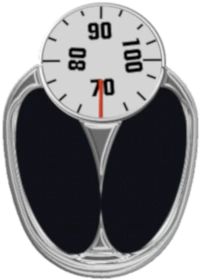Calculate normal weight
 There are several methods you can use to check your body weight.
There are several methods you can use to check your body weight.
Use our Body Measurement Calculators to check wether you are overweight free of charge and without any obligation. Using an online calculator to estimate your body weight (more correctly: body mass), you can calculate your individual normal weight and ideal weight depending on your height, age, gender and stature.
When you use our body measurement calculators, the information you enter is used only for the calculation. Your personal data will not be stored, used for any other purposes, or shared with any third party.
More and more people are accumulating dangerous levels of body fat during their lives. The body fat on the belly (known as visceral body fat) is particularly important for your health because it's more metabolically active. As a result, this body fat can increase the risk of diabetes, cardiovascular disease, and some types of cancer. Apple types are more affected by this health risk than pear types.
-
Body Mass Index (abbr. BMI)
Body Mass Index is the ratio of body mass in kilograms (colloquially: body weight) to the square of height in meters. BMI doesn't distinguish between muscle and fat. As a result, athletes are often incorrectly classified as overweight or even obese based on their muscle mass. BMI doesn't take into account body fat distribution. Because of this weakness, BMI is of questionable value. -
Broca's Formula
Broca's formula is notable for its ease of mental calculation of normal and ideal weight. Just like the BMI, body fat distribution and muscle mass are not considered. Broca's formula applies only to average-sized people (i.e. 1.55 to 1.85 meters). -
Waist to Hip Ratio (abbr. WHR)
The Waist to Hip Ratio refers to the ratio of waist circumference to hip circumference. This ratio is a measure of a person's attractiveness. The WHR answers the question of where a person's fat deposits are located. -
Waist to Height Ratio (abbr. WHtR)
The Waist to Height Ratio is the ratio of waist circumference to height. Unlike the more commonly known BMI, the WHtR provides information about a person's body fat distribution.